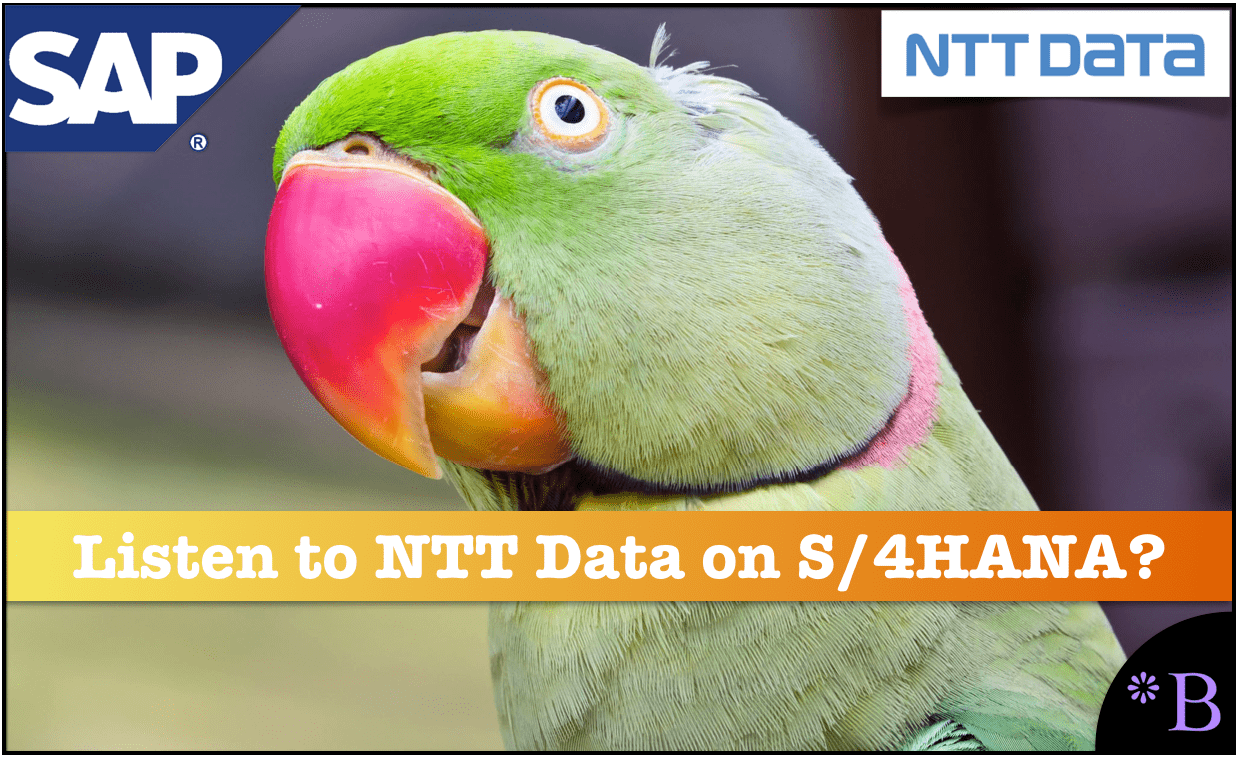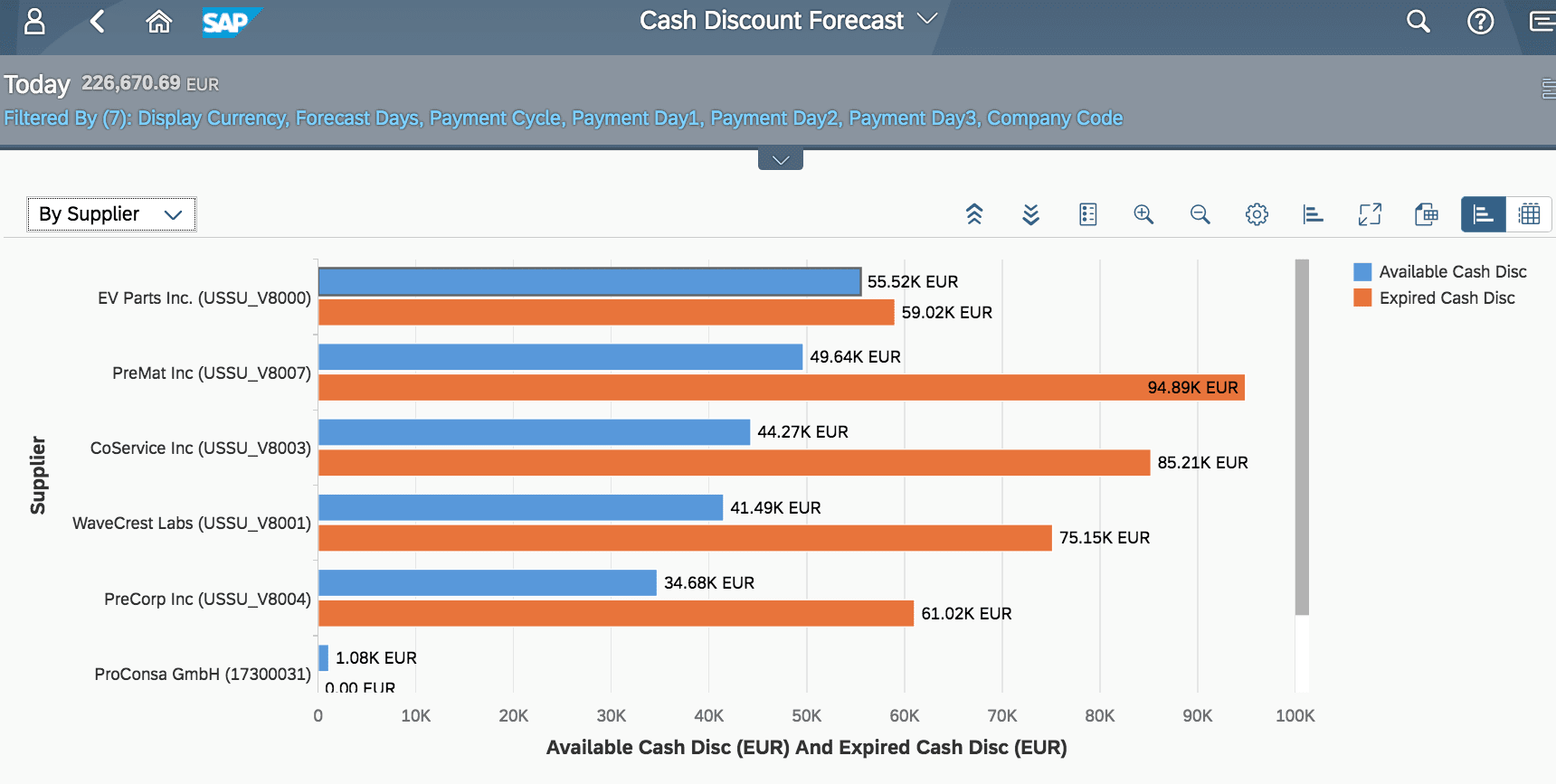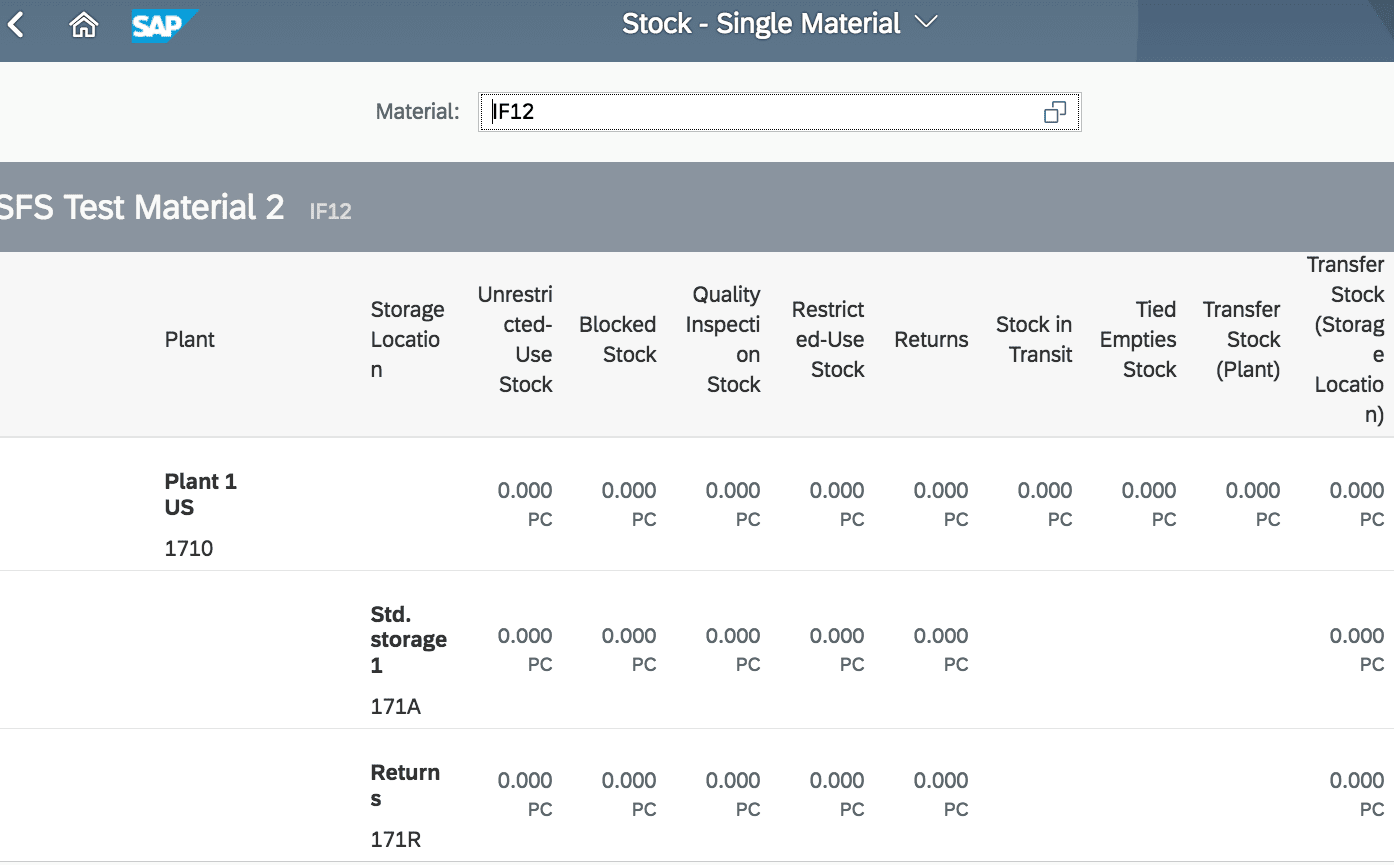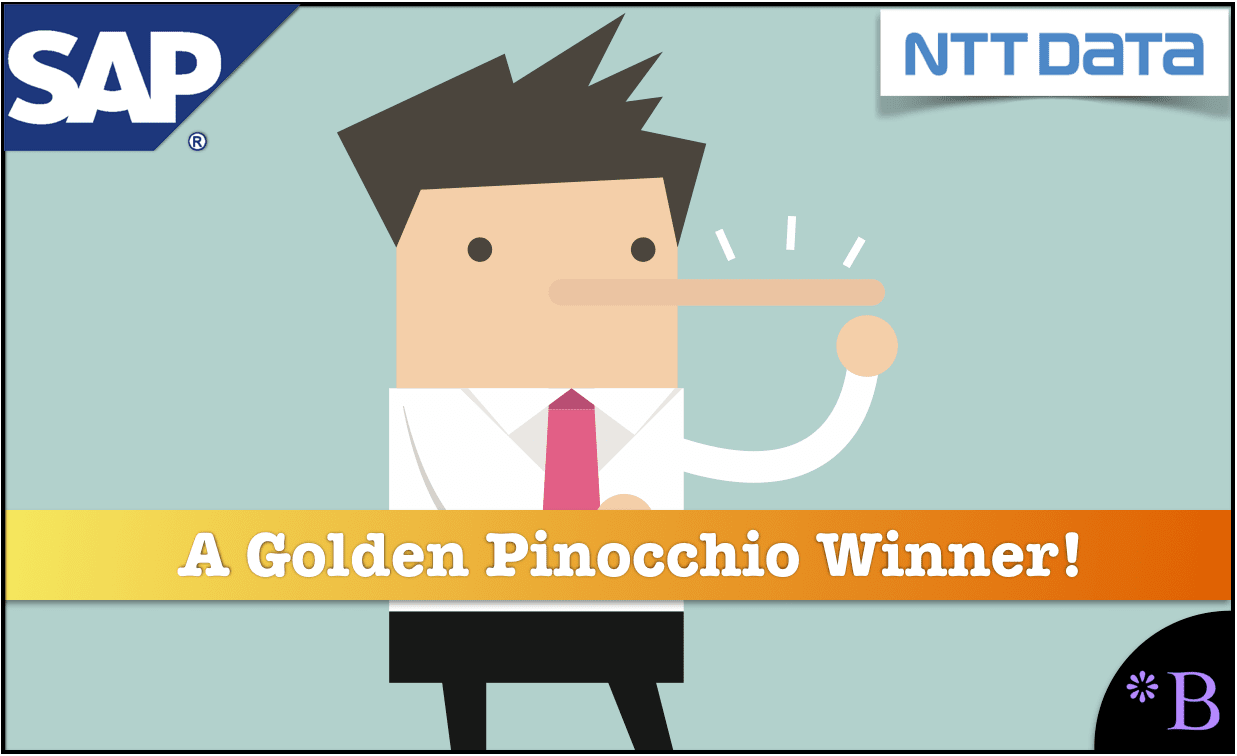Should You Listen to NTT Data on S/4HANA?
Executive Summary
- NTT Data wrote an article designed to sell NTT Data consulting services that give out information on S/4HANA.
- How accurate was this article?

Video Introduction: Should You Listen to NTT Data on S/4HANA?
Text Introduction (Skip if You Watched the Video)
The falsehoods published on the websites of SAP consulting firms never cease to amaze us. NTT Data is one of these SAP consulting firms with zero concern for whether anything it publishes is true. NTT Data writes articles for people that can be tricked and essentially repeats whatever information is provided to them by SAP marketing. You will learn about NTT Data’s claims made on their S/4HANA website pages, and our analysis of these claims from the NTT Data article was titled S/4HANA: the Big Why Part One.
Our References for This Article
If you want to see our references for this article and other related Brightwork articles, see this link.
Notice of Lack of Financial Bias: We have no financial ties to SAP or any other entity mentioned in this article.
- This is published by a research entity, not some lowbrow entity that is part of the SAP ecosystem.
- Second, no one paid for this article to be written, and it is not pretending to inform you while being rigged to sell you software or consulting services. Unlike nearly every other article you will find from Google on this topic, it has had no input from any company's marketing or sales department. As you are reading this article, consider how rare this is. The vast majority of information on the Internet on SAP is provided by SAP, which is filled with false claims and sleazy consulting companies and SAP consultants who will tell any lie for personal benefit. Furthermore, SAP pays off all IT analysts -- who have the same concern for accuracy as SAP. Not one of these entities will disclose their pro-SAP financial bias to their readers.
NTT Data Quotations
Maintenance is Coming to an End
“Tens of thousands of companies rely on the SAP Business Suite for their critical business operations. With maintenance for SAP ECC slated to end in 2025, most of these organizations should be preparing to move to SAP S/4HANA.”
We predict the slow rate of S/4HANA adoption, and SAP will have to extend support beyond 2025.
Number of S/4HANA Live Customers
“However, according to SAP, only 9,500 customers have adopted S/HANA since its launch in 2015. Of these, ASUG reports, only around 1,500 — or approximately 15% — are actually live on the new digital core.”
These items are not correct. Our study shows far fewer than 1,500 live implementations.
Why S/4HANA is Seeing Slow Adoption
“Clearly, the vast majority of ECC customers are struggling to justify S/4HANA adoption from a business case perspective. Concerns about the cost, complexity and time required by the project are widespread. More critically, CIOs and business leaders are having difficulty grasping the overall business value — the big WHY? — that justifies moving to SAP’s new digital core.
Let’s be honest, adopting S/4HANA is a big deal, a major initiative that impacts all aspects of business. It is different from a single self-contained project (like an upgrade or a database migration) and will involve your entire IT system landscape – from architecture to applications to all of the processes mapped within. In many respects, adopting S/4HANA represents a full-scale digital transformation initiative, meaning there’s a lot to consider.”
S/4HANA offers no new functionality and primarily addresses technical changes that are of little value to customers. And it is a high expense item to migrate two, which brings many implementation complexities and high risk. Given these and many other facts, there should be little surprise at S/4HANA’s slow adoption.
S/4HANA = transformation?
“72% of senior leaders surveyed by IDG Research say they view digital strategy as critical to their organization’s success. As reported in Forbes, by 2018, 67% of the CEOs of Global 2000 enterprises will have digital transformation at the center of their corporate strategy.
However, according to a recent survey, only 50% of companies are successfully executing on their digital transformation strategies despite demonstrated efforts and investments.
This disconnect, and S/4HANA’s less-than-blistering uptake, makes one thing clear — CIOs and business leaders are overwhelmed by the massive scope, frenetic pace, and numerous, ever-evolving advanced technologies transformation entails.
Just the same, digital transformation is NOT optional. It is the commitment every business enterprise and public sector organization must make to ensure its relevancy, its survival. Disruption is rampant. No one is safe. This is the reality of business today. The time is now to move forward with your purposeful digital transformation journey.
American Enterprise Institute, a public policy think tank, paints a dire picture for businesses slow to transform. Of all the firms that started on the Fortune 500 list in 1955, almost 90% were no longer on it by 2017. And since 2000, 52% of the list is gone according to AEI.”
This is a ridiculous explanation. S/4HANA is an expense and must compete with other expenses. Other IT expenses also “digitally transform” the business. SAP is not the only vendor that makes promises of benefits from implementing their software. The American Enterprise Institute is a think tank that follows no research rules and is a front for big money donors that seek to influence public policy by using rigged studies funded by billionaires. There is no reason to believe that anything the AEI is legitimate.
S/4HANA — the big why?
“Truth be told, there is no single, silver bullet for justifying transitioning to S/4HANA. While S/4HANA’s lower TCO and easier maintenance are certainly appealing, these gains by themselves are likely not enough to inspire sign-off.”
S/4HANA does not have a lower TCO than ECC. If a company has already implemented ECC, the TCO of S/4HANA must include the implementation cost, which is very high. The proposal that S/4HANA has a lower TCO is an entirely evidence-free contention. Secondly, if S/4HANA did have a lower TCO, why would that not enough to inspire sign-off?
S/4HANA Has Value That Makes Adoption Compelling and Essential?
“Rather, it is the cumulative value S/4HANA delivers across key transformational categories that makes adoption both compelling and essential.”
Why is this true. As previously stated, S/4HANA does not have new functionality from ECC. What makes S/4HANA transformational? It is not the database, and it is not Fiori (which is little used on projects). This is another evidence-free claim.
NTT Data Will Guide You?
“To help our SAP clients better understand why they should make the move to S/4HANA, we guide them through a detailed and comprehensive evaluation of how the key transformational categories yield dramatic, immediate and measurable business value.”
Nothing NTT Data has written so far has been true, so the guidance NTT Data would provide would have a negative value. NTT Data, desiring to implement S/4HANA for clients, will guide them to S/4HANA no matter the value of S/4HANA.
Acquiring, Analyzing, and Acting on Big Data?
“SAP S/4HANA means that as an enterprise you will not have to ignore opportunities involving big data or internet of things. You can tap into insights from any data set of any size with sub-second results to drive effective decisions, boost performance and tap new revenue streams.
Deriving actionable insights — correlations, trends, outliers, etc. — in real time from terabytes of big data — operational, transactional, structured, unstructured — is vital to success for businesses of all sizes across all industries in today’s increasingly global, hyper-competitive, always-on, Internet-of-everything business world.”
S/4HANA has nothing to do with Big Data or IoT. This entirety of this statement is nonsense.
Is Big Data Important to….S/4HANA?
“To be sure, big data has become big business. Data monetization has become a major source of revenues. According to IDC (as reported by Forbes), revenue growth from information-based products will double the rest of the product/service portfolio for one third of Fortune 500 companies.
However, according to Forrester, on average, between 60% and 73% of all data within an enterprise goes unused. Moreover, according to the NewVantage Partners Big Data Executive Survey 2017, 95% of the Fortune 1000 business leaders surveyed said that their firms had undertaken a big data project in the last five years. However, less than half (48.4%) said that their big data initiatives had achieved measurable results.”
Big Data has become a big business for consulting firms and vendors, but there is little evidence that Big Data has made much of a difference for customers. Secondly, even if it did, it still would not justify implementing S/4HANA, as S/4HANA has nothing to do with Big Data.
Big Data “Challenges”
“Clearly, organizations are facing some major challenges when it comes to implementing their big data strategies. In fact, the IDG Enterprise 2016 Data & Analytics Research found that 90 % of those surveyed reported running into challenges related to their big data projects.”
Yes, Big Data projects nearly always have a negative ROI and are beginning based on lies on vendors and consulting companies. The major challenge of Big Data projects is that the actual benefits of Big Data are small.
Powered by HANA (for Big Data)
“Powered by HANA, S/4HANA makes large data loads and complex business models easier to manage and process, enabling organizations to seize business opportunities from big data in the digital economy.”
HANA has nothing at all to do with Big Data. HANA connects to Hadoop (which is Big Data) through something called Vora. Here is the estimate of Vora’s customer base.

This number is the product’s global users, although it does not declare the degree of use.
Yes, Vora is a dead product. This means customers are not using HANA for Big Data.
Real-Time, Operational Intelligence?
“S/4HANA empowers your business to ‘Go Digital’ by connecting people, processes and things to generate business intelligence across a range of key business activities, delivering real-time, continuous insights to business users across your enterprise.”
We have used and tested S/4HANA and have difficulty seeing how this is true. S/4HANA offers very generic analytics functionality.
S/4HANA is Data Driven?
“Organizations that effectively harness BI/analytics will be able to create significant value and differentiate themselves, while those that stall on this front will find themselves increasingly losing ground and making futile attempts to catch up. The chasm between the two will only become more pronounced as technological advances in BI/analytics continue and adoption reaches critical mass.
However, Forrester reports 74% of firms say they want to be “data-driven,” but only 29% are actually successful at connecting analytics to action.
Successfully connecting analytics to actions pays off big time. According to Nucleus Research, analytics delivers on average benefit of $9.01 per every dollar spent.”
This is all nice, but again, S/4HANA does not have much more than canned reports. Any more advanced BI will require the same data warehouse used by ECC.
S/4HANA Transforms ECC?
“S/4HANA transforms ERP from a system of record to a system of intelligence capable of analyzing what is happening in real-time and making recommendations based on the results. With in-memory computing, embedded analytics within S/4HANA allow business users to drill down to a transactional level from within the ERP solution itself. This means they have the flexibility to explore at will and gain in-depth insights without depending on IT or waiting for data to load overnight.”
This again assumes that S/4HANA possesses these excellent analytics characteristics that it does not. S/4HANA’s embedded analytics are fundamental canned reports. This entire paragraph is an enormous overselling of the analytics within S/4HANA.

Here is a cash report from S/4HANA.

This is the Stock Overview Report.
Why are the canned reports and tables available within S/4HANA so highly touted by NTT Data? When we review S/4HANA, it seems to have no relationship to the claims made by SAP or NTT Data or any of SAP’s other consulting partners.
In Memory?
“Processing information in memory directly, rather than reading from and writing to disk data storage, facilitates a sea change real-time operational intelligence. The simplified HANA database removes aggregation and history tables providing fast accurate information on demand and a single version of the truth at the lowest level of granularity.”
HANA does store data to disk. HANA works like other databases in that it uses memory optimization to move between memory and disk.
Conclusion
This article receives a 1 out of 10 for accuracy. NTT Data is very willing to tell any lie to obtain S/4HANA consulting work.

NTT Data receives our Golden Pinocchio Award for the false information published on S/4HANA and HANA in this article.